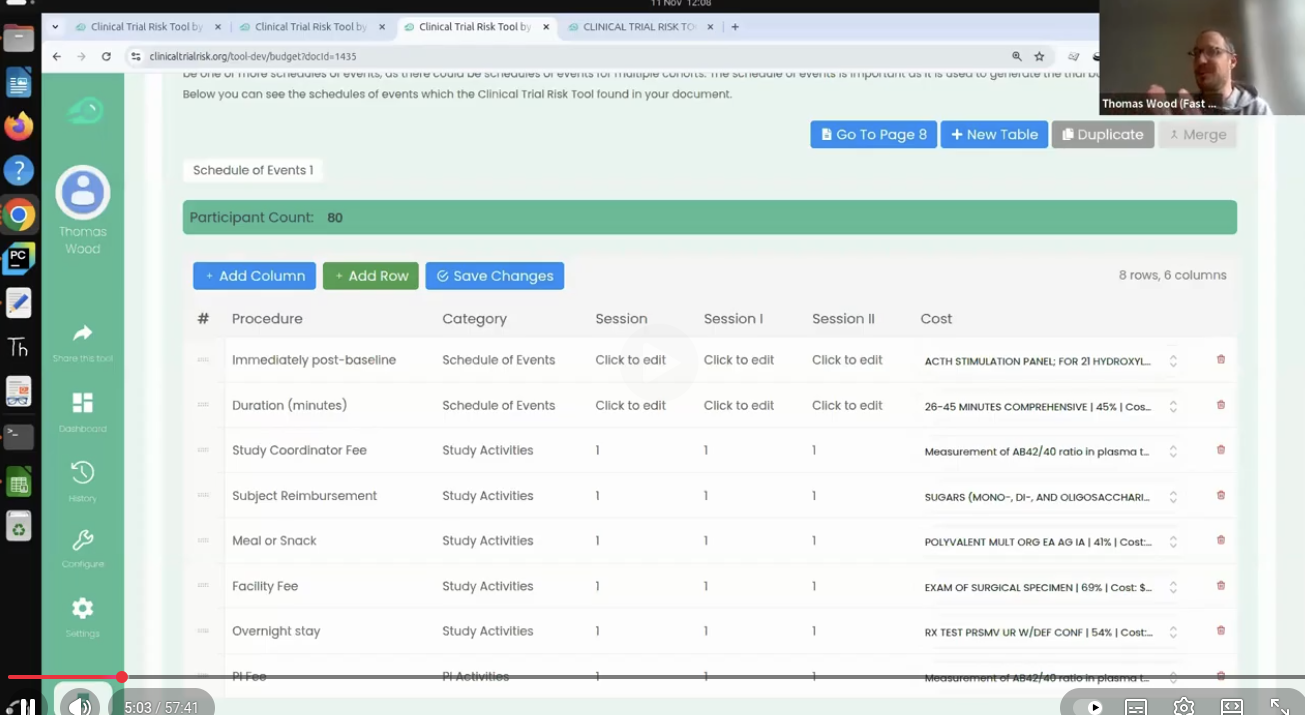
This post originally appeared on Fast Data Science’s blog on LinkedIn.
Clinical trials are vital for advancing medical innovation, yet they often face significant hurdles, including ensuring patient safety, adhering to regulatory requirements, controlling costs, and maintaining efficiency. Traditional risk assessment methods frequently need to be revised to address these complexities.
Artificial Intelligence (AI) is transforming clinical trial management, offering data-driven solutions to predict and mitigate risks. AI-powered tools like the Clinical Trial Risk Tool have revolutionised trial planning and execution. This article explores how AI is reshaping clinical trial risk assessment.
One of the most significant challenges in clinical trials is identifying risks before they become problematic. AI leverages machine learning (ML) and natural language processing (NLP) to analyse vast datasets, such as trial protocols and patient demographics, flagging areas of concern.
For example, AI tools like the Clinical Trial Risk Tool can scan trial protocols to detect:
Missing or inadequate statistical analysis plans (SAPs).
Non-standard endpoints, which may complicate regulatory approval.
Underpowered study designs that could lead to inconclusive results.
These insights enable trial managers to address potential vulnerabilities early, safeguarding trial integrity and efficiency.
Unforeseen expenses, such as additional site visits, protocol amendments, or recruitment delays, can derail a clinical trial. AI-driven tools help mitigate these risks by providing precise cost projections. They consider factors such as:
Recruitment challenges and potential bottlenecks.
Geographic scope and logistical demands of multi-site trials.
Phase-specific expenses and participant numbers.
AI tools like the Clinical Trial Risk Tool offer accurate financial estimates, enabling better resource allocation and reducing the risk of budget overruns.
AI excels at processing and analysing data in real-time, providing actionable insights throughout a clinical trial. Key metrics monitored include:
Patient safety indicators, ensuring ethical practices.
Protocol adherence across sites and teams.
Site performance, identifying and addressing inefficiencies.
For instance, if patient dropout rates increase or site compliance falters, AI can flag these issues immediately, allowing for swift corrective actions.
Manual risk assessments often vary between reviewers, leading to consistency. AI eliminates this subjectivity by applying objective, data-driven criteria.
AI also enhances transparency by clearly explaining risk scores and their contributing factors. This fosters trust among key stakeholders, including:
Sponsors are seeking reliable trial outcomes.
Regulators require adherence to stringent standards.
Research teams are committed to ethical trial execution.
Ethics are at the core of clinical trials, and AI plays a crucial role in upholding these principles. AI tools can:
Identify patient safety risks early, reducing harm.
Ensure compliance with international regulatory standards.
Promote diversity by addressing biases in trial design and recruitment.
These capabilities ensure that trials are conducted responsibly and equitably.
The Clinical Trial Risk Tool exemplifies the transformative potential of AI in clinical research. Key features include:
Customised Risk Assessments: Tailored insights based on trial location, phase, and participant demographics.
Comprehensive Cost Estimation: Detailed financial projections to prevent budget overruns.
Real-Time Monitoring: Continuous data analysis for adaptive trial management.
Open-Source Flexibility: Available under the MIT licence, ensuring accessibility and adaptability.
As clinical trials become increasingly complex, AI is no longer optional—it’s essential. From proactive risk prediction to real-time monitoring, AI-driven tools like the Clinical Trial Risk Tool pave the way for safer, more efficient, and cost-effective trials.
By integrating AI into clinical trial planning and management, researchers can anticipate risks, optimise resources, and prioritise patient safety, advancing medical research to new heights.
#ClinicalTrials #ArtificialIntelligence #HealthcareInnovation #RiskManagement #ClinicalResearch

Thomas Wood presents the Clinical Trial Risk Tool at the Clinical AI Interest Group at Alan Turing Institute The Clinical AI Interest group is a community of health professionals from a broad range of backgrounds with an interest in Clinical AI, organised by the Alan Turing Institute. In the group’s November 2025 meeting, the talk was given by Dr Jeff Hogg, Programme Director, MSc AI Implementation (Healthcare), University of Birmingham and Clinical Innovation Officer in AI, University Hospitals Birmingham NHSFT, titled AI Readiness for Health and Care Provider Organisations.

Guest post by Safeer Khan, Lecturer at Department of Pharmaceutical Sciences, Government College University, Lahore, Pakistan Multi-Arm & Multi-Stage (MAMS) Clinical Trials Design Tips The design of clinical trials is increasingly challenged by the Rising Costs, limited availability of eligible patient populations, and the growing demand for timely therapeutic evaluation. Traditional parallel-group designs, which typically compare a single intervention to a control, are often insufficient to meet these pressures in terms of speed, efficiency, and resource utilization.

You can use the t-test when you want to compare the means (averages) of continuous data between two groups, such as blood pressure or maximum concentration of a drug in urine (Cmax). If you have data with a dichotomous outcome, you can use the Chi-Squared test instead - please try our Chi-Squared sample size calculator. The calculator below will calculate the minimum sample size for you. Your expected effect size d is the standardised effect size according to Cohen’s definition.